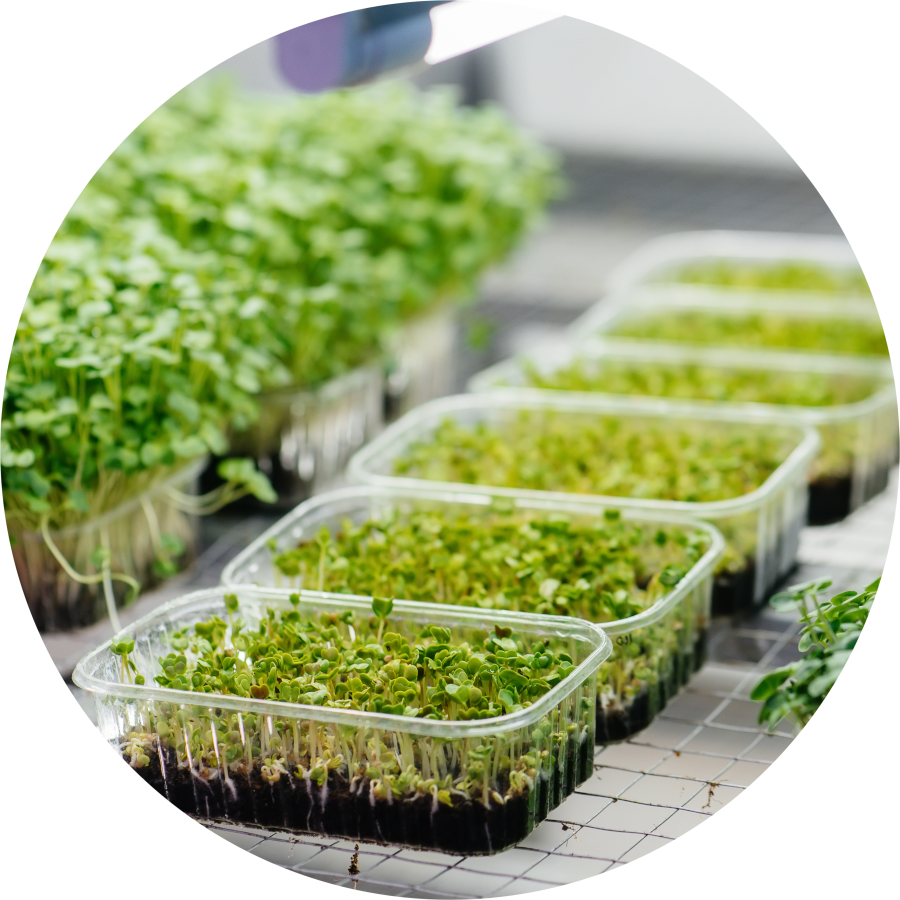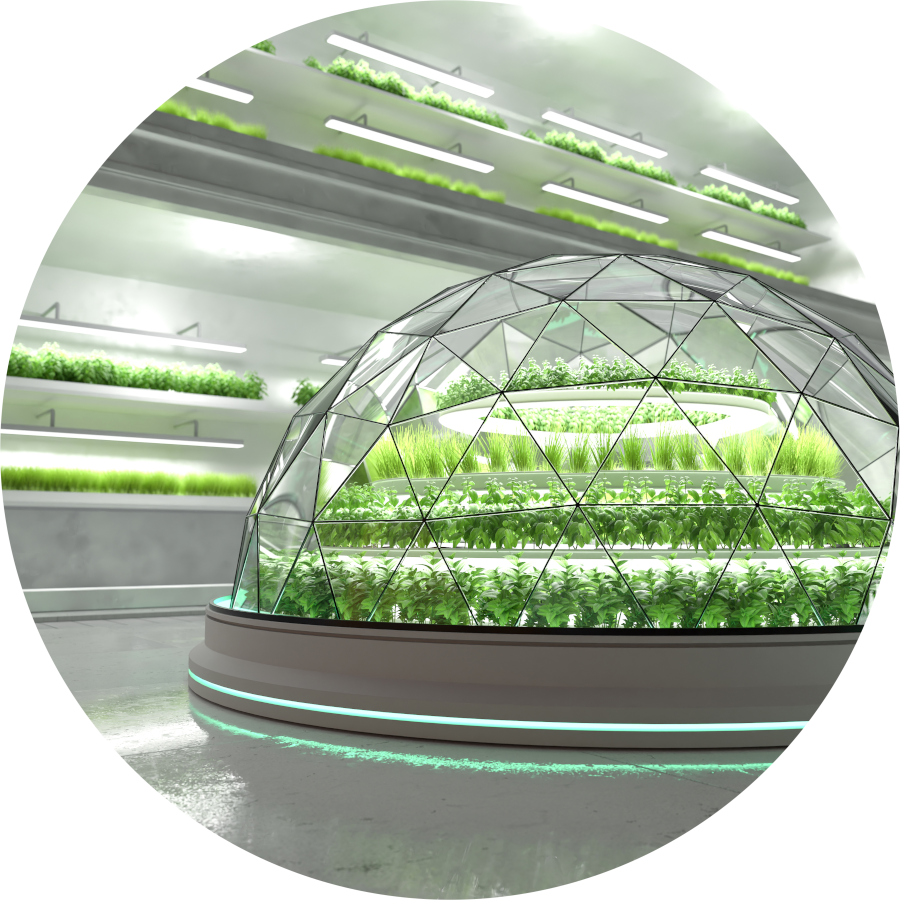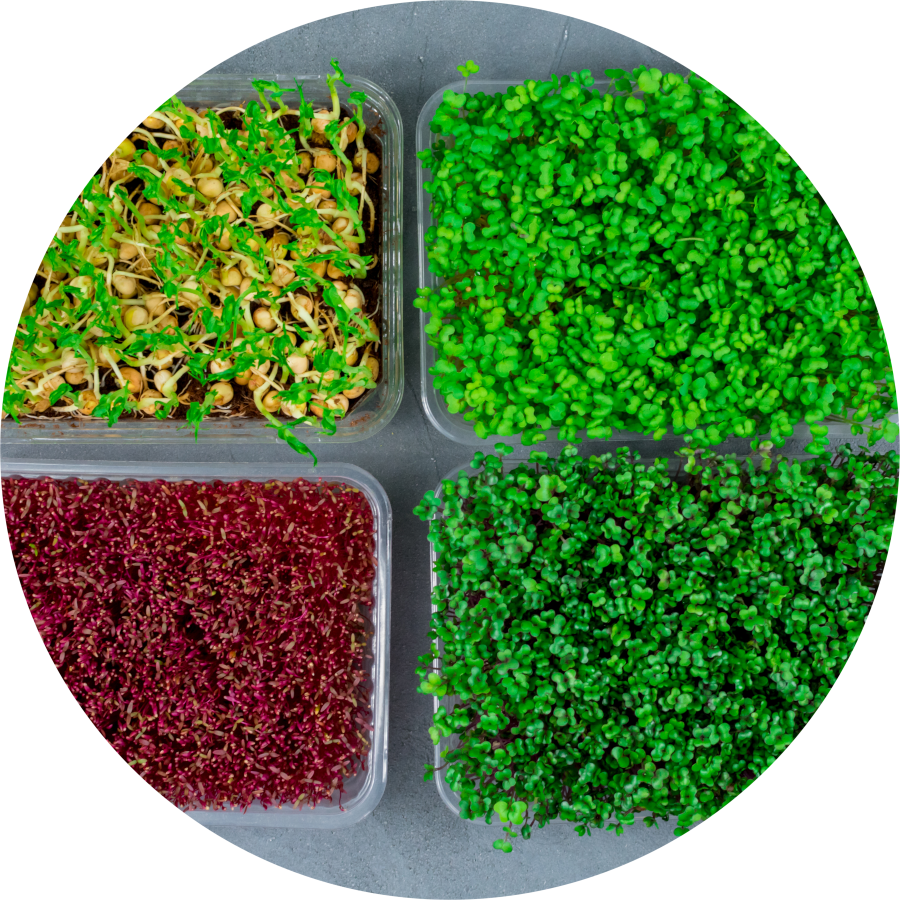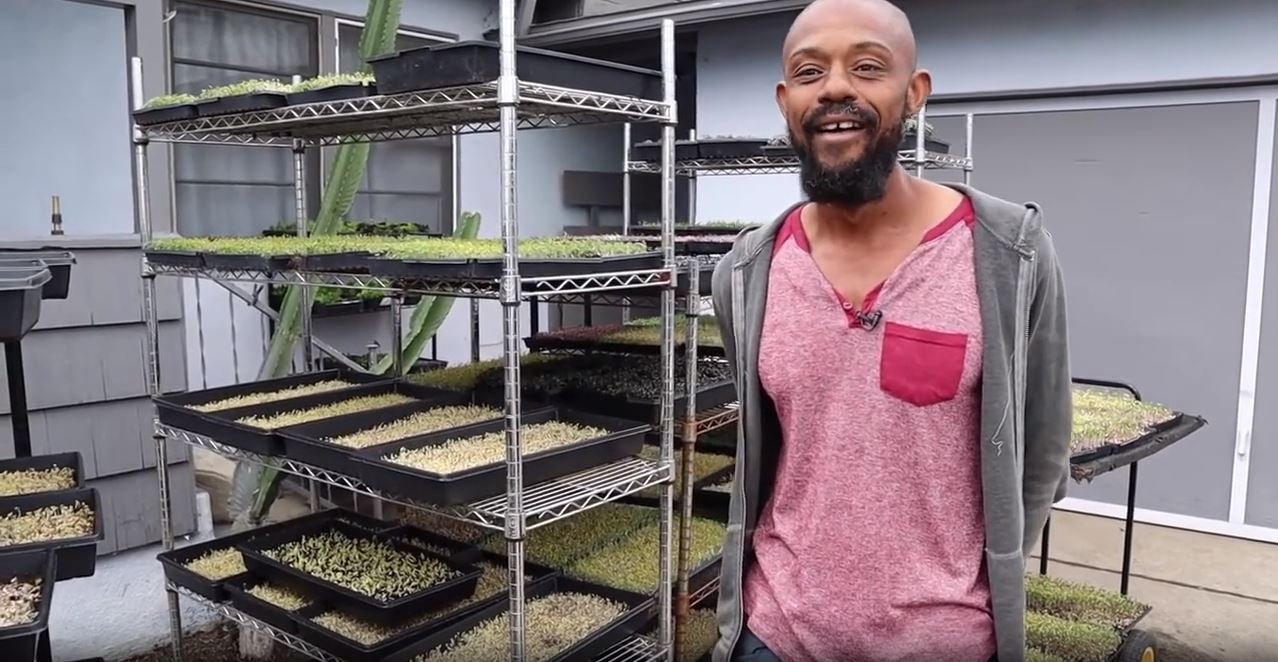In the world of urban agriculture, few names resonate as profoundly as Curtis Stone. He is a pioneering force in the realm of microgreens and urban farming. Recently, a momentous occasion graced the farming community as Curtis visited the home of the equally innovative Justin Gay. This rendezvous wasn’t just a casual meeting; it symbolized the merging of expertise, sustainability, and the future of building a microgreens business.
Curtis Stone, the genius behind Green City Acres in Kelowna, BC, Canada, has revolutionized the way we perceive urban farming. His methods, centered around high-value annual vegetables for direct consumer markets, offer a fresh perspective on agriculture. Through his book, “The Urban Farmer”, Curtis showcases organic-intensive techniques designed to streamline labor and production. But more than that, he paints a vivid picture of modern farming where profitability doesn’t compromise the quality of life. His farm, generating over $75,000 annually in an eight-month season from merely a third of an acre, stands testament to his innovative approaches. It specializes in high-value, quick-growing crops, leveraging multiple plantings and intercropping strategies. Recognized globally, Green City Acres exemplifies the pinnacle of what urban agriculture can achieve.
With Curtis’s insights into building a microgreens business and Justin Gay’s remarkable expertise, their collaboration promises a synthesis of ideas that might reshape urban farming’s landscape. Speculations are rife about potential ventures, workshops, or even a joint business model. However, one thing is for certain: when these two icons come together, the future of urban agriculture and building a microgreens business looks greener and brighter than ever before.

The Power and Potential of Building a Microgreens Business
Microgreens, though diminutive in size, pack a punch far beyond their weight. They’ve been the darling of gourmet chefs for their vibrant colors, intense flavors, and crisp textures. But it’s not just their culinary appeal that’s causing a stir. Building a microgreens business is also catching the eyes of urban farmers, not least because of the quick turnover and high market value. These tiny greens require minimal space, have a rapid growth cycle, and can be grown year-round, making them an ideal candidate for urban farming, especially in spaces where conventional farming seems implausible.
Curtis Stone’s success story with Green City Acres has underscored the feasibility and profitability of urban farming, particularly with a focus on high-value, quick-growing crops like microgreens. By mastering the art of multiple plantings and intercropping strategies, Curtis has shown how it’s possible to maximize yields even within confined spaces. Justin Gay, with his innovative farming techniques, mirrors a similar ethos. Their combined knowledge is a treasure trove for anyone aspiring to delve into the world of microgreens. While the challenges of urban farming, such as limited space, soil quality, and light access, persist, these challenges are not insurmountable. Innovative solutions, many pioneered by Curtis and Justin, are continually emerging to address these constraints.
The rise of the microgreens business isn’t just beneficial for urban farmers; it’s a boon for consumers too. As the demand for fresh, organic, and locally sourced produce grows, microgreens offer a sustainable and local solution. They are nutrient-dense, often containing higher concentrations of vitamins, minerals, and antioxidants than their mature counterparts. This surge in popularity has created a burgeoning market for these greens, further propelling the momentum for building a microgreens business. With visionaries like Curtis Stone and Justin Gay leading the way, it’s evident that the microgreens revolution is just beginning, offering endless possibilities for both farmers and food enthusiasts alike.
Embracing Urban Agriculture: The Path Forward
In today’s rapidly urbanizing world, the need for sustainable food sources within city confines has never been greater. The concept of urban farming, once thought to be a niche or passing trend, is proving to be a solution to many of the challenges modern cities face. It’s not just about producing food; it’s about reshaping urban landscapes, fostering community ties, and building a sustainable future. Urban agriculture is no longer an option; it’s a necessity. And leaders like Curtis Stone are showcasing its potential, turning what was once underutilized land into thriving foodscapes.

Building a microgreens business, as epitomized by Green City Acres, is the embodiment of this new agricultural paradigm. By focusing on crops that are both high in demand and suitable for urban settings, Curtis Stone has managed to create a sustainable, profitable model that can be replicated across cities worldwide. But it’s not just about the business model; it’s about the broader vision. This vision is one of cities teeming with green rooftops, vertical gardens, and community plots, where residents are not just passive consumers but active participants in their food systems. Where the connection between the plate and the plot is palpable, and where agriculture is seamlessly integrated into the urban fabric.
As Curtis’s farm has demonstrated, the benefits of urban farming extend beyond mere produce. It revitalizes neighborhoods, creates employment opportunities, reduces the carbon footprint associated with long-haul transportation, and reconnects city dwellers with the land. This movement towards localized food systems is the future of sustainable living. With pioneers like Curtis Stone and the valuable insights from Justin Gay, urban agriculture is poised to take center stage in the global discourse about food security, sustainability, and community-building. The convergence of these innovative minds is a beacon of hope, signaling a greener and more sustainable urban future.

The Synergy of Two Visionaries: Expanding Urban Agriculture's Reach
When two minds, both deeply entrenched in the ethos of sustainability and innovation, come together, the possibilities are boundless. The collaboration between Justin Gay and Curtis Stone is a perfect embodiment of this. With Justin’s keen insight into sustainable practices and Curtis’s deep knowledge of building a microgreens business, their partnership has the potential to redefine urban agriculture’s landscape.
Justin Gay’s commitment to sustainable practices and regenerative solutions has always been evident. By welcoming Curtis Stone, an expert in maximizing yields from minimal spaces, Justin is expanding the horizons of what urban farming can achieve. Curtis’s methods at Green City Acres — focusing on select high-value crops and optimizing intercropping strategies — are ingenious solutions for urban spaces constrained by size. Merging these methodologies with Justin’s vision can elevate urban agriculture to new heights, making it more accessible and productive for many more.
The fusion of these two visionaries can be a beacon for aspiring urban farmers worldwide. As the world grapples with the challenges of urbanization, shrinking green spaces, and food security, Justin and Curtis’s combined expertise can offer a roadmap. By teaching others the art and science of building a microgreens business within an urban setting, they are not just growing plants but sowing the seeds for a greener, more sustainable future.
Leveraging Urban Spaces: The Microgreens Revolution
Urban spaces often present a unique set of challenges for traditional farming, with limited land and a dense infrastructure. However, with challenges come opportunities. For those intrigued by the idea of building a microgreens business, urban settings can offer an unparalleled advantage. The secret lies in understanding the nuances of microgreen farming and leveraging the benefits of cityscapes.

Microgreens, known for their nutritional density and rapid growth cycles, are perfect candidates for urban agriculture. These miniature plants require minimal space, making rooftops, balconies, and small backyards viable farming grounds. Additionally, the short growth cycle of microgreens, often just 7-21 days from seeding to harvest, means entrepreneurs can see a quick return on investment, both in terms of time and resources. Curtis Stone’s Green City Acres exemplifies this model, turning a mere third of an acre into a thriving and profitable agricultural enterprise.
But the benefits don’t stop there. Building a microgreens business in an urban setting has the added advantage of proximity to consumers. Restaurants, health food stores, and conscious consumers are always on the lookout for fresh, local produce. By establishing an urban microgreens farm, one can tap into this ready market, cutting down on transportation costs and carbon footprint. Curtis and Justin’s collaboration can serve as an inspiring blueprint, showcasing how urban spaces, when approached with innovation and knowledge, can transform into bustling hubs of green entrepreneurship.

Tapping into the Microgreens Market: Business and Growth Strategies
Entering the world of microgreens business isn’t just about understanding the art of cultivation, but equally about grasping the intricacies of the market. With an ever-growing demand for healthy, local, and organic produce, the potential is vast. However, knowing how to position oneself can make the difference between a fleeting venture and a sustainable business.
Firstly, it’s vital to understand your customer base. In the realm of microgreens, there’s a diverse clientele, ranging from health enthusiasts and gourmet chefs to eco-conscious consumers. Restaurants, especially those catering to a health-conscious clientele or offering gourmet dishes, are prime customers. They are consistently on the hunt for fresh ingredients that elevate their culinary creations. By offering restaurant partnerships or subscription models, a microgreens entrepreneur can secure a steady stream of revenue. Additionally, hosting workshops or collaborating with local health-focused events can not only boost sales but also enhance brand visibility.
Lastly, embracing the digital era can significantly amplify the reach of a microgreens business. Utilizing platforms like social media to showcase the freshness and quality of produce, sharing behind-the-scenes glimpses of the farming process, or even offering online sales with local delivery options can drastically widen the customer base. Curtis Stone’s success isn’t merely rooted in his farming acumen but equally in his ability to communicate and connect with a broader audience. Emulating such strategies can provide budding entrepreneurs with a roadmap to success in the dynamic world of microgreens.
Incorporating Advanced Techniques and Sustainable Practices into Building a Microgreens Business
Building a microgreens business isn’t just about tapping into an existing market, but about setting new standards and constantly innovating. A pivotal aspect of this is integrating advanced techniques and sustainable practices into your farming routine. Not only does this cater to an eco-conscious clientele, but it also ensures the longevity and health of your microgreens operation.

Water management is a prime concern in urban agriculture, and adopting efficient irrigation methods is key. Drip irrigation or wicking systems can optimize water usage, ensuring that the crops get the exact amount they require without wastage. Furthermore, these systems reduce the risk of diseases associated with over-watering, ensuring a healthier crop yield. Another technique that holds promise for microgreens cultivation is the use of LED grow lights. These lights can be tailored to provide the precise light spectrum that microgreens need, accelerating growth and potentially enhancing nutrient content.
Beyond technical practices, sustainable farming is about building a business that’s symbiotic with its environment. Incorporating practices like composting, crop rotation, and natural pest control not only reduces the farm’s ecological footprint but also resonates with consumers who value environmentally responsible businesses. Curtis Stone’s Green City Acres stands as a beacon in this regard, demonstrating that profitability doesn’t have to come at the environment’s expense. By infusing these advanced techniques and sustainable practices, those keen on building a microgreens business can ensure a venture that’s both profitable and planet-friendly.
Diversifying Offerings and Exploring Market Avenues when Building a Microgreens Business
As with any business, diversification can be a linchpin for success, especially when it comes to building a microgreens business. While the staple varieties like radish, arugula, or broccoli microgreens will always be in demand, introducing lesser-known varieties can set your business apart and cater to niche markets. Think of amaranth, tatsoi, or even sunflower microgreens; these unique offerings can pique the curiosity of chefs, food enthusiasts, and health-conscious consumers alike.

Next, packaging plays a substantial role in attracting customers. Eco-friendly packaging, which aligns with the sustainable ethos of urban farming, can be a huge draw. Whether it’s biodegradable containers or reusable packaging systems, the way microgreens are presented can make a significant difference in market perception. Moreover, including details about the nutritional benefits, potential recipes, or even a brief backstory of your farm can connect with consumers on a deeper level.
Finally, exploring various market avenues is critical. While farmer’s markets and direct-to-consumer sales are excellent starting points, collaborating with local restaurants, cafes, and gourmet stores can amplify reach and reputation. Hosting workshops or farm tours can also be a viable strategy, as they not only generate additional income but also foster community engagement and education about the importance and benefits of microgreens. The takeaway? Diversification in offerings and market strategies can be instrumental in carving out a unique niche and ensuring the robust growth of a microgreens business.
Optimizing Production and Managing Challenges while Building a Microgreens Business
Every business has its own set of challenges, and microgreens are no exception. For those building a microgreens business, understanding and managing these challenges is crucial. Let’s delve into some strategies to optimize production and circumvent potential pitfalls.

Firstly, optimizing the growing environment is essential. Microgreens require specific light, temperature, and moisture levels for optimal growth. Invest in quality grow lights, maintain a consistent temperature, and ensure adequate ventilation. Automated systems might seem like an initial investment but can pay off in the long run by maintaining consistent growing conditions, leading to a more predictable harvest. It’s also beneficial to regularly rotate crops to prevent soil exhaustion and to keep a keen eye out for any signs of disease or pests.
Supply chain management is another pivotal aspect. Regularly evaluate your suppliers to ensure you’re receiving high-quality seeds and growing mediums. Also, consider having backup suppliers to mitigate any potential supply chain disruptions. Streamline your harvesting, packaging, and delivery processes to ensure that the microgreens reach the consumers as fresh as possible. This not only helps in building a reputation for quality but also reduces wastage.
Lastly, be prepared for market fluctuations. Demand for certain microgreens can be seasonal or influenced by current food trends. To navigate this, stay updated with market trends, engage with your customers to understand their preferences, and be flexible in adjusting your crop rotations based on demand. By being proactive in anticipating challenges and having a strategy in place, you can ensure a steady and successful journey in the microgreens business.
What We’ve Learned about Starting a Microgreens Business
As the demand for locally sourced, nutritious foods continues to grow, the potential for microgreens businesses becomes even more evident. Curtis Stone’s journey from an urban farmer in Kelowna to an international figurehead in the realm of profitable urban agriculture serves as an inspiring testament to what’s achievable. If you’re considering diving into the world of microgreens, remember that success lies not only in understanding the horticultural aspects but also in mastering the business side of things. With diligence, passion, and the right strategies, a microgreens venture can become both a profitable business and a rewarding endeavor.
The key takeaway for aspiring entrepreneurs is that with the right blend of knowledge, innovation, and determination, the world of urban farming can offer immense rewards. Whether you’re aiming to transform a small patch of urban land or an expansive rural field, the principles of efficiency, quality, and market understanding remain crucial. Embrace the journey, continually adapt, and you’ll find that building a microgreens business, just like any entrepreneurial venture, is as much about personal growth as it is about professional success.
Q&A: Building a Microgreens Business
Q: Who is Curtis Stone and what’s his expertise?
A: Curtis Stone is a renowned urban farmer, author, and speaker from Kelowna, BC, Canada. His speciality lies in cultivating high-value, quick-growing vegetables tailored for direct consumer markets. He has innovated organic intensive techniques and emphasizes the importance of streamlined labor and production in farming.
Q: What makes Curtis’ farming techniques stand out in urban agriculture?
A: Curtis’ farming methodologies focus on maximizing yield and profit from limited spaces. By selectively growing high-value crops that can be replanted multiple times in the same soil and applying strategic intercropping, he showcases the potential of efficient urban farming.
Q: How profitable can an urban microgreens business be?
A: With the right strategies, urban microgreens businesses can be highly profitable. As an example, Curtis’ farm, Green City Acres, generates over $75,000 annually, and that’s achieved within just an eight-month growing season on a mere third of an acre.
Q: What are the benefits of building a microgreens business?
A: Microgreens businesses offer numerous advantages. They require minimal space, have a quick turnover rate, and cater to the increasing demand for local and nutritious food options. Plus, with proper strategies in place, they can achieve remarkable profitability.
Q: Are there any challenges or misconceptions about urban farming?
A: Certainly, urban farming is often mistaken as a mere hobby rather than a viable business venture. However, with innovation, efficiency, and market understanding, urban farmers can overcome these challenges and misconceptions, paving the way for successful and profitable ventures.

